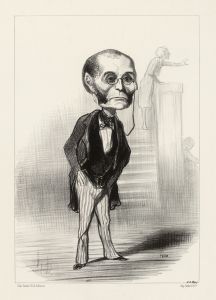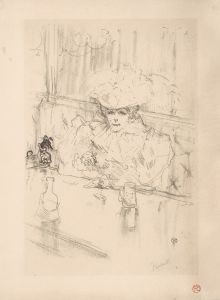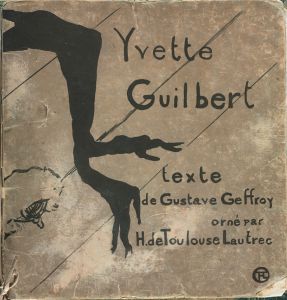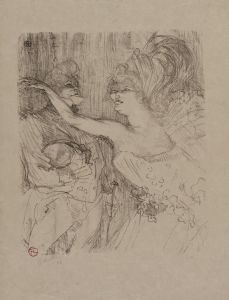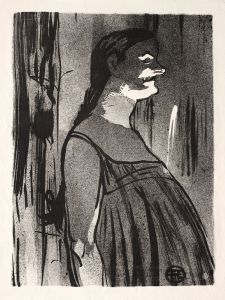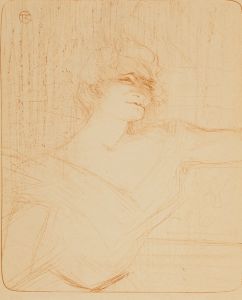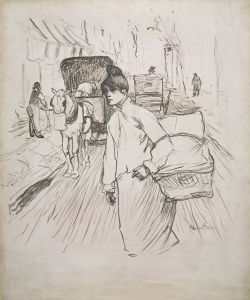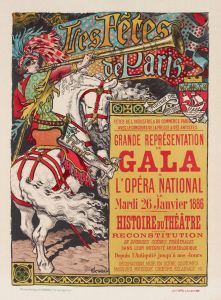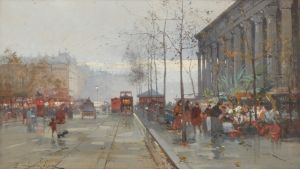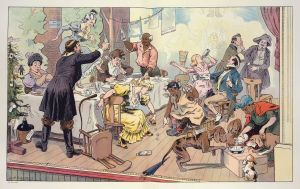
Réjane and Galipaux, in Madame Sans-Géne
A hand-painted replica of Henri de Toulouse-Lautrec’s masterpiece Réjane and Galipaux, in Madame Sans-Géne, meticulously crafted by professional artists to capture the true essence of the original. Each piece is created with museum-quality canvas and rare mineral pigments, carefully painted by experienced artists with delicate brushstrokes and rich, layered colors to perfectly recreate the texture of the original artwork. Unlike machine-printed reproductions, this hand-painted version brings the painting to life, infused with the artist’s emotions and skill in every stroke. Whether for personal collection or home decoration, it instantly elevates the artistic atmosphere of any space.
Henri de Toulouse-Lautrec, a prominent French painter, printmaker, and illustrator of the Post-Impressionist period, created the artwork "Réjane and Galipaux, in Madame Sans-Gêne." This piece is a testament to Lautrec's keen interest in the theatrical world and his ability to capture the essence of performance and character.
The painting features two notable figures from the French theater: Gabrielle Réjane and Émile Galipaux. Gabrielle Réjane, born Gabrielle Charlotte Réju, was a celebrated French actress known for her comedic talent and dynamic stage presence. She was one of the leading actresses of her time, often compared to her contemporary, Sarah Bernhardt. Réjane was particularly famous for her role in the play "Madame Sans-Gêne," a comedy written by Victorien Sardou and Émile Moreau, which premiered in 1893. The play tells the story of a laundress who rises to nobility during the Napoleonic era, and Réjane's portrayal of the titular character was widely acclaimed.
Émile Galipaux, on the other hand, was a well-regarded French actor and playwright. He was known for his versatility and ability to perform in both comedic and dramatic roles. In "Madame Sans-Gêne," Galipaux played a significant role alongside Réjane, contributing to the play's success and popularity.
Toulouse-Lautrec's depiction of Réjane and Galipaux in this artwork captures a moment from the play, showcasing his skill in rendering theatrical scenes with vibrancy and character. Lautrec was known for his ability to convey the atmosphere of the Parisian nightlife and theater, often focusing on the performers and their expressions. His works frequently highlighted the personalities and emotions of his subjects, bringing them to life on canvas.
The painting is characterized by Lautrec's distinctive style, which includes bold outlines, dynamic compositions, and a keen attention to detail. His use of color and form effectively conveys the energy and drama of the theatrical performance. Lautrec's interest in the theater was not merely artistic; he was deeply embedded in the cultural scene of Paris, often attending performances and socializing with actors, dancers, and other artists.
"Réjane and Galipaux, in Madame Sans-Gêne" is an example of Lautrec's broader body of work that celebrates the vibrancy of Parisian culture at the turn of the 20th century. His paintings and posters from this period provide a window into the world of cabarets, theaters, and the people who inhabited them. Lautrec's art remains influential, offering insights into the social and cultural dynamics of his time.
Today, Henri de Toulouse-Lautrec is remembered as a master of capturing the spirit of the Belle Époque, and his works continue to be celebrated for their unique perspective and artistic innovation. "Réjane and Galipaux, in Madame Sans-Gêne" stands as a testament to his enduring legacy and his ability to immortalize the theatrical world through his art.





